Jerash and the Dead Sea - 23rd December 2007

A 6.30am wake up call, suitcases on the bus and after breakfast an 8am departure north to Jerash today.
Jerash is one of the largest and most well-preserved sites of Roman architecture in the world outside Italy, matched only by Ephesus in Turkey. It is probably second only to Petra on the list of 'must see' places in Jordan.
There are a number of vendors selling a range of touristy gifts as you enter the site from the car park, most have reasonable prices and don't give you much hassle. It's a pleasant place to shop for souvenirs.
Archaeologists have found the ruins of settlements dating back to the Neolithic Age, indicating human occupation at this location for more than 6500 years.
After falling under the rule of the Seleucid King Antioch, Jerash was conquered by the Roman Emperor Pompey. It was during the period of Roman rule that Jerash prospered.
The Romans named it as one of the great cities of the Decapolis League. Pliny listed the great cities of the Decapolis League as Damascus, Philadelphia (now Amman), Gerasa (Jerash), Scythopolis (Beisan), Gadara (Umm Qais), Hippos, Dion, Pella, Canatha and Raphana.
Over the next century trade with the Nabateans increased. The city also benefited from the rich surrounding farmlands and from iron ore mining.
The city received a visit from Emperor Hadrian in 129 AD. The citizens raised a monumental Triumphal Arch at the southern end of the city in his honour, and this is one of the first sights you come across as you explore.
Just to the left of Hadrian's Arch you see the Hippodrome and the ten starting gates (carceres), which have now been re-assembled from the rubble and rebuilt. Hippodromes usually have twelve starting gates I'm told. The Hippodrome is home to the Roman Army and Chariot Experience, or RACE; more on this later.
It's a short walk from Hadrian's Arch and the Hippodrome to the visitor's centre, where you collect your ticket to the site. Walk through the South Gate and the history of Jerash is waiting.
From the South Gate you can see the splendid sight of the Oval Plaza. The spacious plaza is surrounded by a broad sidewalk and a colonnade of 1st century Ionic columns. There are 2 altars in the middle, and a fountain was added in the 7th century AD. This now supports a central column, which was recently erected to carry the Jerash Festival flame.
A staircase leads up from the Oval Plaza to the Temple of Zeus. Erected in 162 AD, this temple stands on ruins of earlier sacred sites. Next to the Temple is the South Theatre, built during the reign of Emperor Domitian, between 90-92 AD. The South Theatre seats more than 3000 spectators and serves today as the primary venue for the Jerash Festival of Culture and Arts (in July). The first level of the ornate stage has been reconstructed and is still used today. The remarkable acoustic allows a speaker at the centre of the orchestra floor to be heard by the entire auditorium.
There are pipers in traditional Jordanian military dress that have a regular 'show' in the South Theatre. The Jordanian Pipe Band is a legacy from the days of the British Army, playing a selection of tunes including 'Scotland the Brave', much to the delight of many of the British tourists.
Walking from the South Theatre there are a number of Byzantine churches before reaching the impressive Temple of Artemis. Artemis, daughter of Zeus and sister of Apollo, was the patron goddess of Gerasa. The Temple, built in 150AD, was a place of sacrifice dedicated to Artemis. Although small, the temple's Corinthian columns tower above you. 11 of the 12 front columns are still standing.
At this point my time was running short. As mentioned earlier, Jerash is home to the Roman Army and Chariot Experience. Fortunately there was enough time for anyone interested to take in the show, so I made my way back to the Hippodrome.
On the way I passed the Nymphaeum. This ornamental fountain was constructed in 191 AD, and dedicated to the Nymphs. These fountains were common in Roman cities,. This fine example was originally embellished with marble facings on the lower level and painted plaster on the upper level, topped with a half-dome roof Water cascaded through 7 carved lions' heads into small basins on the sidewalk and overflowed from there through drains into the underground sewer system.
From here the Colonnaded Street took me back to the Oval Plaza, through the South Gate and to the Hippodrome.
Click below to see the Roman Army and Chariot Experience.
Are you ready to race?
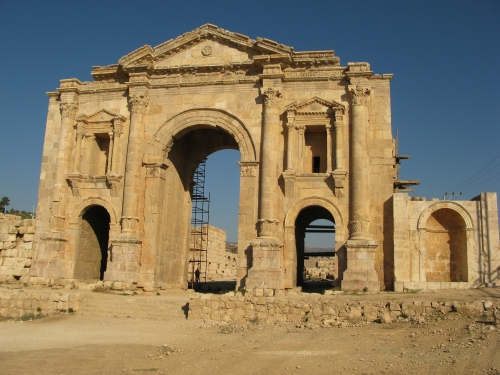
Hadrian's Arch at the south end of the city

A view of the Hippodrome with the starting gates
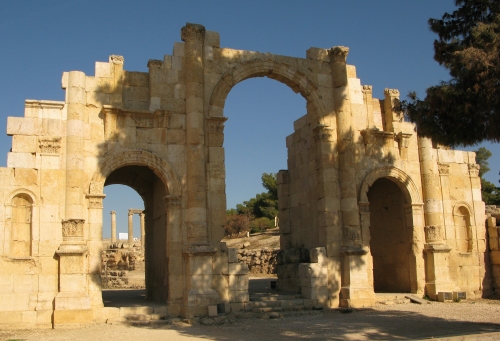
The South Gate at Jerash
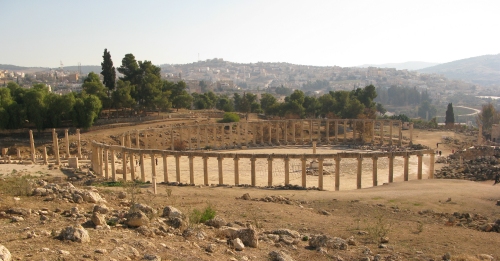
A view of the Oval Plaza
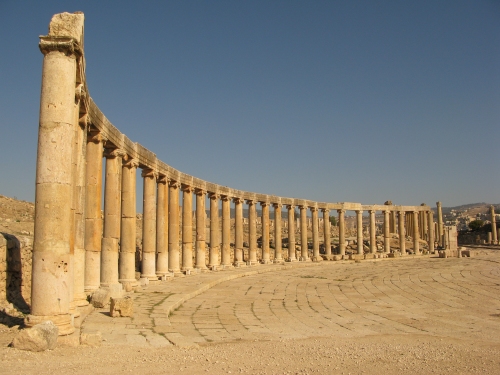
The ionic columns surrounding the oval plaza

The Temple of Zeus
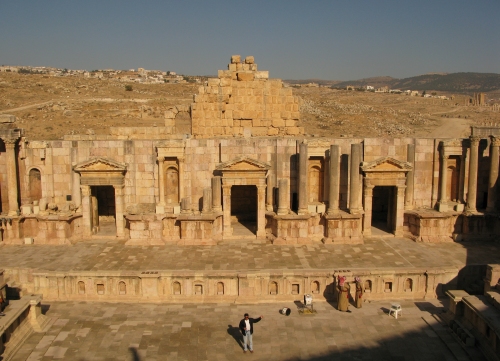
The South Theatre - with our tour guide
Akmed in the centre

The pipers entertain

Posing with the pipers
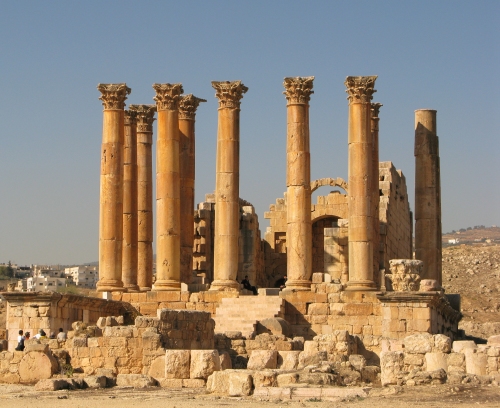
The Temple of Artemis
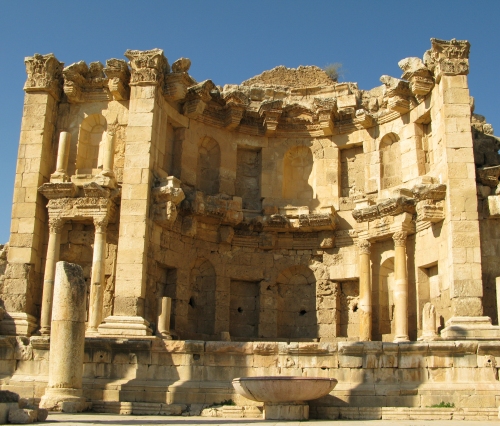
The Nymphaeum
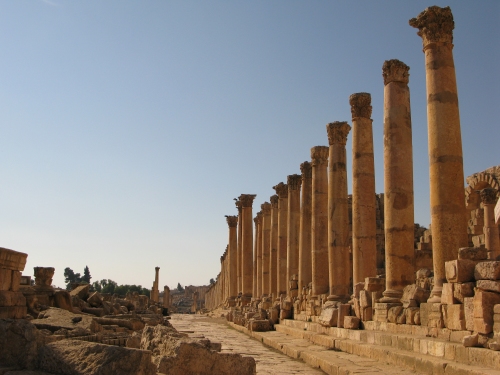
The Colonnaded Street to the Oval Plaza